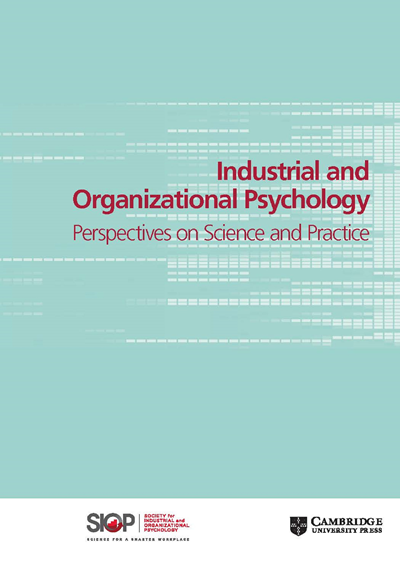Neurodiversity in the workplace: Considering neuroatypicality as a form of diversity
IF 4.3
3区 心理学
Q1 PSYCHOLOGY, APPLIED
Industrial and Organizational Psychology-Perspectives on Science and Practice
Pub Date : 2023-03-01
DOI:10.1017/iop.2022.86
引用次数: 20
Abstract
Abstract Estimates suggest as much as 17% of the US workforce may be neuroatypical, a term used to describe individuals whose neurological functioning is at the tail ends of the distribution of naturally occurring variation. Although the neuroatypical population has a history of under- and unemployment, their inclusion in the modern workplace (i.e., promotion of neurodiversity within organizations) is gaining recognition by scholars and organizations as an important dimension of organizational diversity. Despite this burgeoning interest in examining neuroatypicality in the context of organizational diversity, surprisingly little research has been conducted that bridges these two research areas. The literature that does exist is scattered across several different academic disciplines, largely outside of industrial-organizational psychology, and rarely examines the employment of neuroatypical workers explicitly from a diversity perspective. In this article we argue that as the nature of work evolves and jobs continue to become more specialized, neurodiversity will become an increasingly relevant dimension of organizational diversity and is likely to play a key role both in terms of individual employees’ well-being and performance outcomes, as well as organizational success.工作场所的神经多样性:将神经非典型性视为多样性的一种形式
摘要估计表明,多达17%的美国劳动力可能是神经非典型的,这一术语用于描述神经功能处于自然发生变异分布尾端的个体。尽管神经非典型人群有不足和失业的历史,但他们融入现代工作场所(即促进组织内的神经多样性)正被学者和组织认可为组织多样性的一个重要方面。尽管人们对在组织多样性的背景下研究神经非典型性越来越感兴趣,但令人惊讶的是,很少有研究将这两个研究领域联系起来。现有的文献分散在几个不同的学术学科中,主要是在工业组织心理学之外,很少从多样性的角度明确研究神经非典型工作者的就业问题。在这篇文章中,我们认为,随着工作性质的演变和工作的专业化,神经多样性将成为组织多样性的一个越来越相关的维度,并可能在员工个人的幸福感和绩效结果以及组织成功方面发挥关键作用。
本文章由计算机程序翻译,如有差异,请以英文原文为准。
求助全文
约1分钟内获得全文
求助全文
来源期刊

Industrial and Organizational Psychology-Perspectives on Science and Practice
PSYCHOLOGY, APPLIED-
CiteScore
7.70
自引率
10.10%
发文量
85
期刊介绍:
Industrial and Organizational Psychology-Perspectives on Science and Practice is a peer-reviewed academic journal published on behalf of the Society for Industrial and Organizational Psychology. The journal focuses on interactive exchanges on topics of importance to the science and practice of the field. It features articles that present new ideas or different takes on existing ideas, stimulating dialogue about important issues in the field. Additionally, the journal is indexed and abstracted in Clarivate Analytics SSCI, Clarivate Analytics Web of Science, European Reference Index for the Humanities and Social Sciences (ERIH PLUS), ProQuest, PsycINFO, and Scopus.
 求助内容:
求助内容: 应助结果提醒方式:
应助结果提醒方式:


